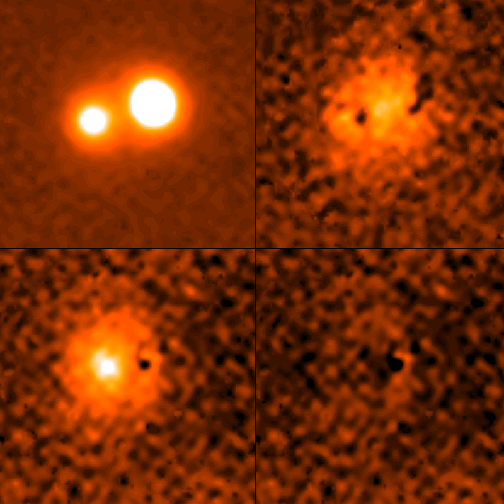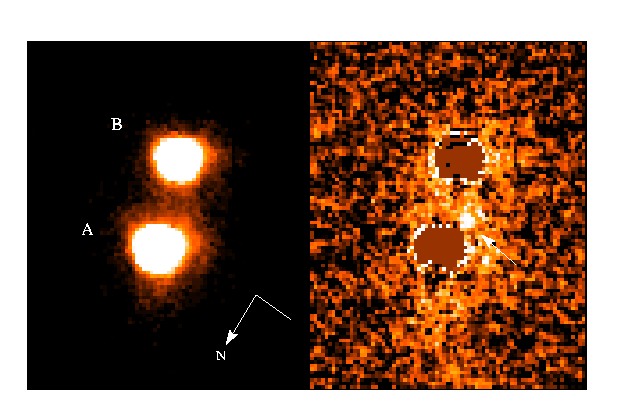
|
We are also using the Near InfraRed Camera (NIRC) at Keck Observatory to
obtain short exposure images of many quasars which are not in the HST
target list but are also good lensing candidates. This program has
not yet turned up any new lenses, but NIRC images of two of the new HST
lenses has been able to detect and characterize the lensing galaxy.
The upper left panel at left shows the NIRC image of a lensed quasar
found in the STIS survey. The separation between components is 1.2".
The upper right panel shows the large residuals left after removing
two point sources; the excess light suggests that the lensing galaxy
is detected. The lower left panel shows an elliptical galaxy model
(plus residuals) which, when added to the mix, nicely accounts for the
excess light, as demonstrated by the greatly reduced residuals in the
lower right panel. Click on the image to see a bigger version.
|
